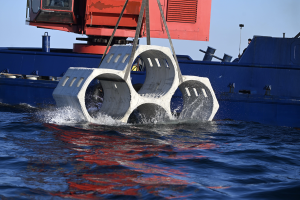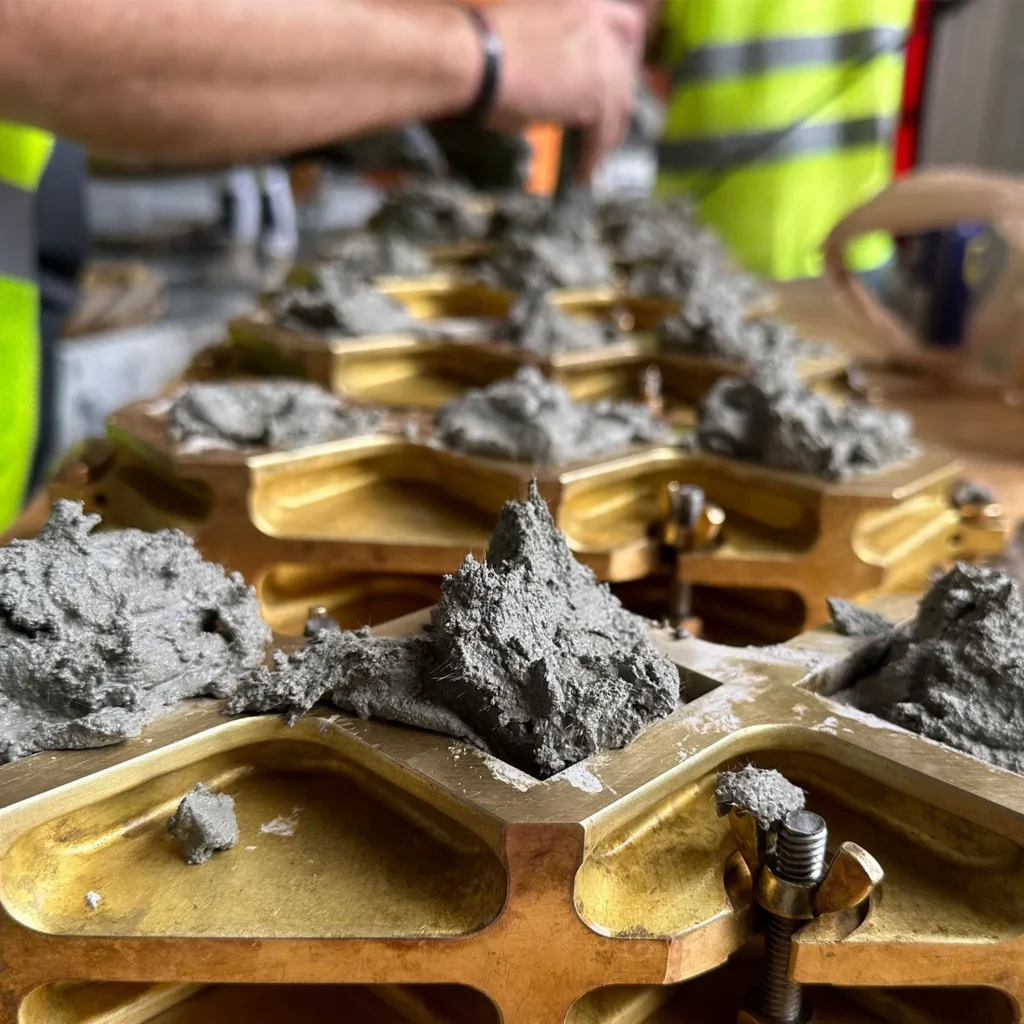Changing the Landscape: 1Print Co-Founder Adam Friedman on His Unique Approach to 3D Printed Construction
Additive construction (AC) is much more versatile than it seems, at first: as natural as it is to focus on the exciting prospect of automated home construction, there’s far more that concrete printing can do than just housing. The small but busy AC market has started to catch on to that fact more and more, however, with companies in the space increasingly delving into infrastructure projects in parallel to society’s gradually widening embrace of printed homes.
1Print, based in Pompano Beach, Florida, is one such company, and the business model the firm has hit upon may ultimately enable acceleration of AC deployment for infrastructure projects. The company’s co-founder, Adam Friedman, explained this to me recently not long after 1Print came out of stealth mode:
“We’re a service provider,” Friedman said, “the same as a contract manufacturer in the industrial space, but for construction 3D printing. We’ll take any construction printer and any material and, whatever the customer needs, we’ll make it happen. So, we’re both the operators of the machines and we’re product developers. In addition, we’re signing on as a value-added reseller [VAR] of a few different machines from OEMs around the world, that offer different applications and technologies.
“With that in mind, we’re looking for more people like us who can franchise the 1Print model, most specifically in support of our government customers. We want to appeal to people all over the country, and all over the world, who find the VAR business model attractive, who we can then help with machines, and contracts, and training, and everything else that you need to succeed at construction printing.”
1Print’s first publicly-announced project has put the company in an excellent position to follow through on those aims. Via a partnership with the University of Miami (UM), 1Print has the rights to sell SEAHIVE® systems all over the world.
UM began developing SEAHIVEs, perforated concrete tubes installed near shorelines to facilitate coastal resilience, in 2018 — part of an initiative called the University Laboratory for Integrative Knowledge (U-LINK) project. Originally, each SEAHIVE was wet cast one-by-one, but, around a year ago, UM teamed up with 1Print, who recommended printing the structures in clusters. In addition to being cheaper and faster to build than the wet casting versions, the unique geometries enabled by AC could potentially make the structures more resilient against waves.
Although 1Print is a fairly new company, Friedman had his sights set on using 3D printing for construction for quite some time, leading up to the company’s founding in 2022. Friedman began in the defense sector, a work history that included starting one of the first additive manufacturing (AM) labs at one of the contract manufacturing companies he worked for. Even before he entered the AM workforce, however, around a decade ago, Friedman said one paragraph in a book about AM “changed [his] life”:
“In the very last chapter, on the last page, it said something like, ‘…and someday, we’ll be able to 3D print houses out of concrete.’ I started off in construction when I was 12-years-old, so 3D printed construction combines both of my passions perfectly. After that, I kept track of all the activity happening within 3D printed construction very closely. But I was waiting for the technology to get to a certain point.
“My interest wasn’t in developing the machines — I knew there were people out there like the COBODs and ICONs who were working on that. I wanted to own and operate a business that helped other people use the machines.”
Eventually, as Friedman networked and found others who shared his vision for AC, he crossed paths with Fredrik Wannius (around 2019), the other co-founder of 1Print, who hired Friedman to work at the company he was then running. After only a couple of years, the two decided to found 1Print together.
Initially, 1Print was focused exclusively on printing homes. However, Friedman said that the company’s “introduction to the universities” made 1Print realize the opportunity “for structures other than houses and buildings.” On the other hand, the company still prints houses, with Friedman noting that 1Print expects to work on three real estate projects in 2024.
But, at least in the near-term, infrastructure may prove to be the area where 1Print will find the most possibility for growth, and the need for enhancing coastal resilience in oceanside communities is a major reason for that. Another reason is there’s far less work that has to be done in terms of selling the legacy construction industry on the idea that homebuyers are ready to fall in love with 3D printed houses:
“Anyone who has worked in real estate construction knows there’s a lot of moving parts, and a lot of things that go wrong,” said Friedman. “Then you add a high-tech element to it, which is very foreign to the companies involved, and one person who’s scared off by not wanting to learn the technology can make the difference between the project happening, or not.”
 Beyond that, the built-in government support for infrastructure projects means there’s simply a different set of incentives driving the activity:
Beyond that, the built-in government support for infrastructure projects means there’s simply a different set of incentives driving the activity:
“Working with the government is also not for everyone — it’s extremely complicated, and again, it’s a whole different set of moving parts, but a lot of moving parts there, as well. With my background in defense, though, it’s been a natural progression for me. We work with customers like the Department of Defense, the Department of Transportation, the Department of Energy, and the relevant municipalities for each project.
“In that context, we’re very, very fortunate to have the partners that we have. The network of people we have surrounding us is extremely valuable. Whether it’s people in government policy, in the military, in academia, or partners in the private sector, we’ve benefitted tremendously from the insight and support of everyone we work with.”
Along those lines, 1Print’s membership in South Florida’s ClimateReady Tech Hub, which was designated as a technology hub by the Department of Commerce’s Economic Development Administration (EDA) in October 2023, should be pivotal to the company’s future. Depending on how willing the government is to continue exploring new use-cases for AC-centered infrastructure projects, 1Print and the ClimateReady Tech Hub could also become pivotal to the future of concrete printing.
Images courtesy of 1Print
Subscribe to Our Email Newsletter
Stay up-to-date on all the latest news from the 3D printing industry and receive information and offers from third party vendors.
You May Also Like
3D Printing Unpeeled: $5000 Cold Spray 3D Printer, Roland DGA & Living Materials
The AeroForge is a $5000 cold spray metal printer for copper made by a student team at Rice University. In a paper for ACS Central Science a team from Nanjing...
3D Printing Webinar and Event Roundup: April 28, 2024
In this week’s 3D Printing Webinar and Event Roundup, the Ceramics Expo is taking place in Michigan, Stratasys continues its advanced training courses, and SPE is holding a Polymer Characterization...
Meltio Expands Global Reach with New Partnerships in the Americas and Europe
Spanish 3D printing manufacturer Meltio has expanded its sales network across the globe. With the addition of three new partners in the United States, Brazil, Argentina, and Italy, Meltio aims...
US Army Corps of Engineers Taps Lincoln Electric & Eaton for Largest 3D Printed US Civil Works Part
The Soo Locks sit on the US-Canadian border, enabling maritime travel between Lake Superior and Lake Huron, from which ships can reach the rest of the Great Lakes. Crafts carrying...

































